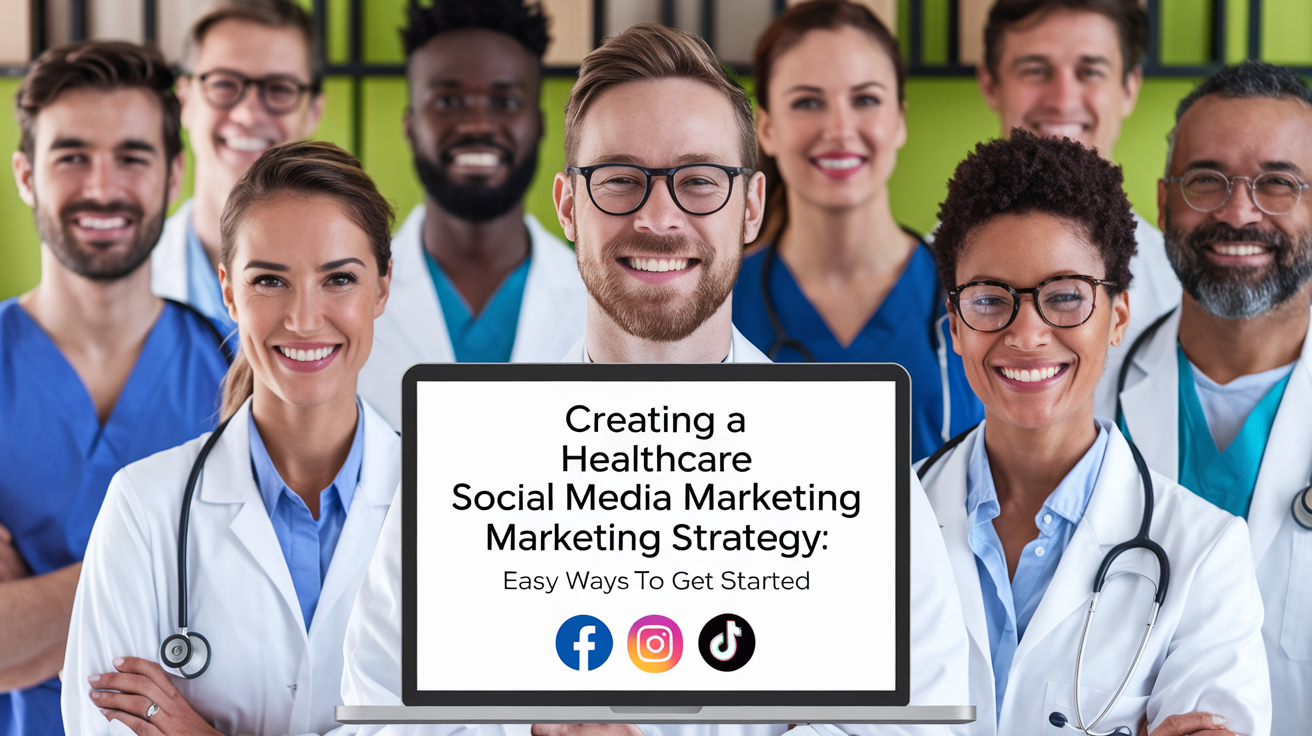You probably often see and hear the acronyms PPC and CPC but maybe are not fully aware of what they mean. As a business or brand owner, these two acronyms should be an essential part of your arsenal as they are crucial aspects of any digital marketing advertising strategy.
In a nutshell: PPC is a form of paid advertisement. CPC, on the other hand, is an important performance metric that businesses use to measure the effectiveness of their ads. Understanding what PPC and CPC are all about is key to successful ad campaigns. In this article, we will delve deeper into PPC and CPC, explaining their importance, benefits, and how they work, to help you polish up your digital marketing strategy and reap the full benefits of your ads campaigns!
What does PPC stand for?
PPC in digital marketing stands for pay-per-click. This is a pricing model in digital advertising in which campaign owners only have to pay for an ad when users click on it. PPC is a highly targeted form of digital advertising that allows you to reach potential customers who are actively searching for products related to your business.
What does CPC stand for?
CPC stands for cost-per-click. It is a metric that determines how much campaign owners pay for ads they run on social media, search engines, and third-party websites. The amount they pay depends on the number of valid clicks the ad receives. Here at Nomadic Advertising, we consider CPC to be a very important metric as it measures the price of our paid advertising campaigns.
Benefits of PPC
Pay-per-click advertising offers several benefits for businesses of all sizes. This is especially for businesses looking to drive traffic to their website, expand and increase sales.
Benefits of PPC advertising include:
- It’s cost-effective
PPC offers good value for your money. This is because you only pay for an ad when a user clicks on it. We find this advertising model very beneficial as it allows us to work within a budget. Due to its trackable nature, we can easily analyze loss or profit. If the ad campaigns are not giving a good ROI, you can decide to spend more money till you have a successful campaign or you also can choose to end that campaign.
- Targeted options
With PPC advertising, we can target specific demographics, locations, and keywords. This way, our ads are only shown to users who are most likely to be interested in our product. You can segment each as you run to reach certain audiences.
- It is customizable
Once you create an ad, you can monitor the effects and results of the ad. You can also adjust your ads to get better results using the data over time from monitoring and tracking. With PPC advertising, you have a clear target.
- Increase brand awareness
You can use PPC to target keywords for your sector so that your adverts reach the proper audience while they are searching for advertisements. Target Keywords help to raise brand awareness and visibility, which in turn results in increased sales. The more your brand appears in search results, the more likely customers will patronize your business or visit your physical locations. PPC can ensure that your brand name shows in the proper locations.
Why is PPC important?
PPC is important because it gives you real-time control over your ad expenses and ad targeting. The biggest advantage of this type of marketing is that it provides immediate results. It assists businesses in boosting their visibility on search engines such as Google. PPC also provides advertisers with results as soon as their ads go live. This is why PPC is vital for organizations that want to take advantage of a relatively short-term marketing opportunity. This includes major occasions, product launches, holidays, and seasonal specials.
Main types of PPC ads
The type of PPC ad you choose should depend on your marketing goals, target audience, and budget. The main types of PPC ads include:
Search Ads
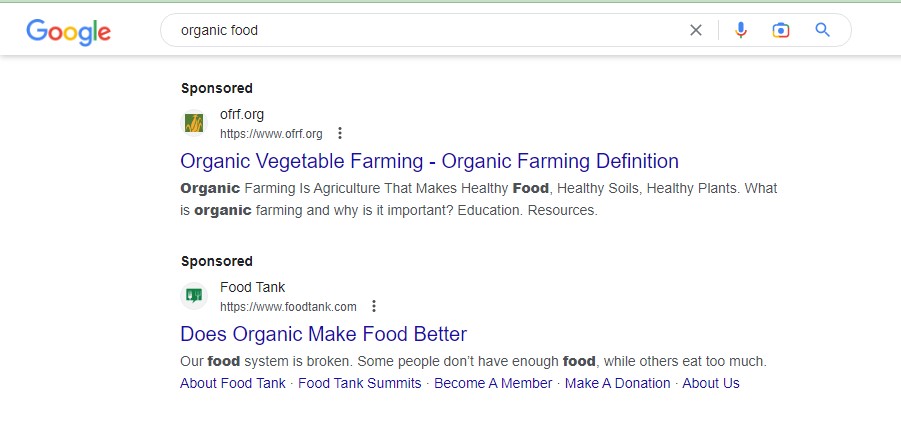
A sponsored search ad is the most prevalent sort of PPC ad. PPC search advertising employs a bidding method to determine the order in which the advertiser’s sponsored ads appear on the SERP page. It considers how much the advertiser bids on the term and other quality factors.
Display Ads
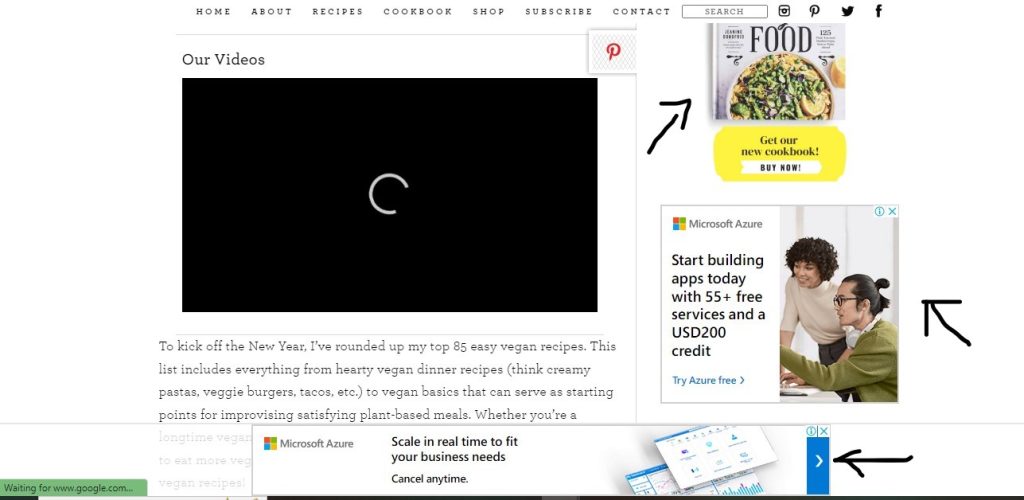
In the image above, all three arrows point to various examples of display ads. Display advertising consists of banner, picture, or text advertisements that are selected to target specific groups. These ads will include a link to your website. We design our display ads to get people’s attention and encourage them to visit your website.
Social Media Ads

These advertisements can be found on social media platforms like Facebook, Instagram, Twitter, and LinkedIn. They successfully target specific audiences based on demographics, interests, and behaviors. Social media ad formats include text-based adverts, photos, videos, or sponsored posts. PPC advertising on these platforms can assist you in increasing website click-through rates.
Creating a PPC strategy
A PPC strategy is a plan of action for using pay-per-click advertising to achieve your business goals. This includes increasing website traffic, generating leads, or driving sales. Here are the steps involved in creating a successful PPC strategy:
1. Define Your Goals
Defining your goals for PPC is the most critical aspect of developing an effective marketing strategy. Do you want to improve website traffic, create leads, increase sales, or raise brand awareness? Knowing your objectives will assist you in determining the PPC platform and ad types for your marketing needs.
2. Identify Your Target Audience
Determine who your ideal customer is. This will assist you in creating better-targeted and relevant advertisements that are more likely to be clicked on. Knowing your target audience and their position in the sales funnel can help you determine which advertising opportunities to pursue.
3. Choose Your Keywords
Create an SEO keywords list to target based on the search queries your target audience will input into search engines. You can use keyword research tools like Google keyword planner to determine the most effective keywords for your advertising.
4. Create Compelling Ad Copy
Create attention-grabbing, relevant, and appealing ad copy. Include keywords in your ad wording that are more relevant to the user’s search query. The goal is to offer value while expressing your unique selling proposition with a clear CTA (call-to-action).
5. Set Your Budget
Determine how much you are willing to spend on your PPC campaigns and set a daily or monthly budget. Monitor your spending regularly to ensure that you are staying within your budget.
6. Monitor and Optimize
Continually monitor your campaigns to see what is working and what isn’t. Adjust your bids, ad copy, and targeting to improve your campaigns’ performance and achieve your goals. By continually optimizing your PPC campaigns, you can create an effective PPC strategy that drives traffic and helps you to achieve your business goals.
Google Pay Per Click ads
Google Pay-Per-Click (PPC) ads are an effective strategy for companies seeking to boost their online presence and drive visitors to their websites. It’s a cost-effective strategy to increase brand awareness, attract qualified traffic to your site, and increase sales. You must have a Google AdWords account before creating a Google PPC ad.
Here are some important considerations we make while developing a Google PPC ad campaign:
- Keyword Research: The first step in developing a Google PPC ad campaign is determining the keywords and phrases your target audience is looking for. Identify low-competition and high-volume keywords relevant to your business using keyword research tools.
- Targeting: Use Google targeting options such as location, age, gender, and interests to ensure that the right people see your ads.
- Ad Copy: Create compelling ad copy that includes your target keywords and encourages users to click through to your website. Use clear and concise language that highlights the benefits of your product or service.
- Landing Pages: Make sure the landing page to which users are taken after clicking on your ad is relevant and has a clear call to action. A well-designed landing page can boost your conversion rates dramatically.
- Bidding: Set a bidding strategy that considers your budget and goals. Use manual or automated bidding strategies such as target CPA to optimize your bidding.
- Performance Tracking: Regularly monitor the performance of your Google PPC campaigns and make any adjustments. Tracking tools like Google Analytics can help you determine the performance of your ads and discover areas for improvement.
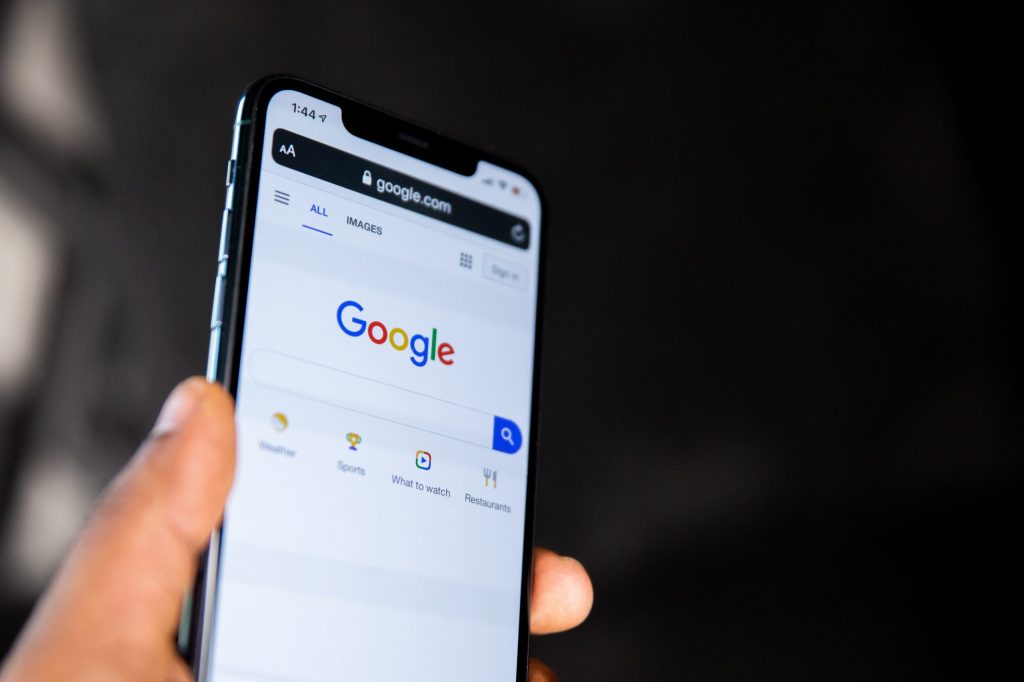
Facebook PPC
Facebook is practically exceptional when it comes to precise targeting. Facebook has a lot of information on its users, and this information helps advertisers to target the right people with the right message. Creating a Facebook PPC (pay-per-click) ad can be an extremely successful strategy to reach your target demographic and meet your advertising objectives.
To develop an effective Facebook PPC ad, follow these tips:
- Define your advertising goals and target audience: Determine your goals, such as brand awareness, lead generation, or sales. Identify your target audience, including their demographics, interests, and behaviors.
- Set up a Facebook Ads Manager account: Create an account and select your ad objectives, such as brand awareness or conversions.
- Choose your ad placement and format: Select the ad placement, such as Facebook or Instagram, and choose the ad format, such as image, video, or carousel.
- Create your ad content: Write compelling ad copy, select engaging visuals or videos, and include a strong call to action.
- Set your ad budget and bidding strategy: Determine your daily or lifetime budget. Choose your bidding strategies, such as cost per click or cost per impression.
- Launch and monitor your ad: Launch your ad, monitor its performance, and make adjustments as needed to optimize its results.
Creating a successful Facebook PPC ad requires careful planning, creative content, and ongoing monitoring and optimization to achieve your advertising goals. Monitor the performance of your Facebook PPC campaigns regularly and make adjustments as needed. Use Facebook Ads Manager to track the efficacy of your ads and identify areas for improvement.

Can you calculate your CPC?
You can calculate your cost-per-click (CPC) by dividing the total cost of your advertising campaign by the total number of clicks received. The formula for calculating CPC is: CPC = Total Cost / Total Clicks. For example, if you spent $300 on a PPC campaign and received 100 clicks, your CPC would be:
CPC = $300 / 100 clicks
CPC = $3 per click
Should calculating CPC influence your PPC campaign?
Calculating cost-per-click (CPC) can assist you in evaluating the efficacy of your PPC campaign and making changes to increase your ROI. Knowing our CPC allows us to calculate the average cost of gaining a click and analyze whether it aligns with our advertising goals and budget. If your CPC is high, you may need to tweak your bidding strategy, increase ad quality, or modify your landing pages. You may boost your click-through rates and conversions by making these changes, which will improve the overall success of your PPC campaign.
Can you measure the performance of a PPC campaign with CPC?
Yes, you can measure the performance of your PPC campaign using CPC ( cost per click). Several metrics are important in analyzing your PPC ad campaign. CPC is a performance metric that shows the entire value of your PPC campaign. It determines whether you spend too much on leads compared to the revenue generated in return. Keep in mind, a high CPC may suggest wasted ad investment since not enough visitors clicking through convert into leads.
PPC examples
Some examples of successful PPC ad campaigns include:

Converse
Converse hired a digital marketing agency to create a creative video PPC campaign that targets their teenage audience. This ad had a high conversion rate and significantly boosted sales. The campaign aimed to increase engagement by conversing with the viewers through ad copy instead of just selling their products. By using Google AdWords, they tap into cultural moments relevant to their audience. They used keywords such as “first day of summer,” “spelling bee,” “how to talk to girls,” and “how to kiss” to start conversations.
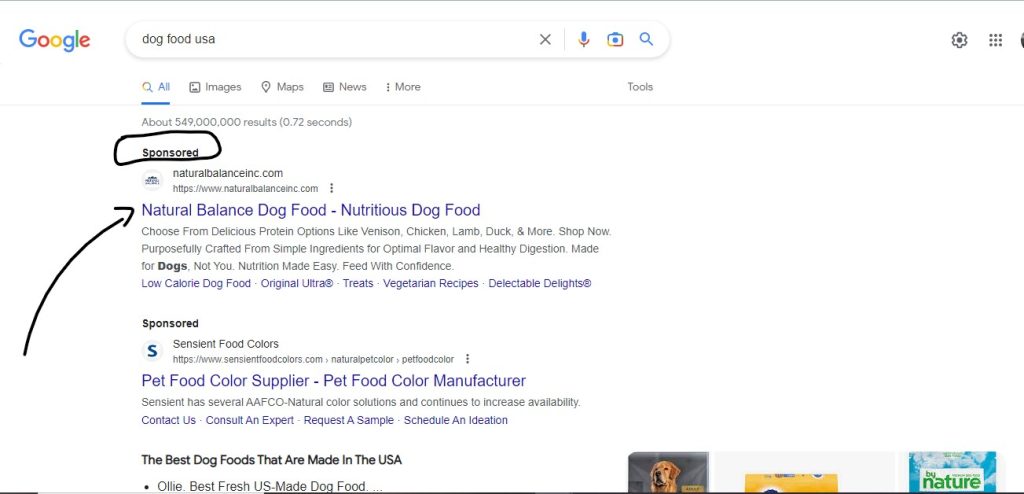
Natural Balance
Natural Balance uses Google search campaigns as part of its PPC marketing strategy, but it its own particular way. They chose a different ad format to drive attention to its other pages, like the vegetarian recipes, traits, low-calorie dog food, original ultra, etc. The brand used a very engaging ad copy text that is humor based. The ad features a call to action, encouraging users to shop for the options mentioned. This shows that Natural Balance Inc. is the highest bidder for the keyword “dog food USA,” as its ad ranks first on the SERP.
Accurately calculating your CPC can provide valuable insights into your PPC campaigns. It can also help you make well-informed decisions about your digital marketing strategy. At Nomadic Advertising, we specialize in creating tailored and effective PPC ad campaigns for businesses of all sizes. We offer Facebook and Google PPC campaign management, social media marketing, as well as comprehensive SEO services among other various offerings. Reach out to us and book a FREE 30-minute strategy session to see exactly what we can do for your business, the customized strategy we can build for you, and how we can harness the full power of the internet to your advantage.
FAQ
1. What is PPC vs. Google Ads?
PPC stands for pay-per-click and is an online advertising model where advertisers pay each time someone clicks on their ad. Google Ads is Google’s platform for managing PPC campaigns. Google Ads is where brands can create, run, and manage their campaigns to reach their target audience through Google’s search engine and partner websites.
2. What is the average rate CPC for ads?
The average cost-per-click (CPC) for ads can vary depending on the industry, target audience, and geographic location.
3. What is a good CPC rate in marketing?
A good CPC rate in marketing depends on several factors. This includes the industry, target audience, and advertising goals. Generally, a good CPC rate is one that is lower than your maximum bid and provides a positive return on investment (ROI) for your business.
4. Why is my CPC so high?
There are several reasons why your cost-per-click (CPC) may be high. This includes strong competition for your target audience, low ad relevance, low-quality score, low click-through rate (CTR), and high maximum bids. To lower your CPC, you may need to adjust your bidding strategy, improve your ad quality and relevance, and target more specific keywords or demographics.
5. Why does my CPC increase?
CPC can increase due to a variety of factors. This includes increased competition, changes in ad algorithms, changes in user behavior, and changes in bidding strategies.
6. How do PPC and SEO work together?
In order for PPC ads to reach your target audience directly, you need to add the right keywords to your campaigns. That’s where SEO comes in. If you want to drive organic traffic to your campaign you need to create a solid SEO strategy that can solidify your ad content (headlines, descriptions and images) with the right keywords to boos your online presence and turn leads into customers.






